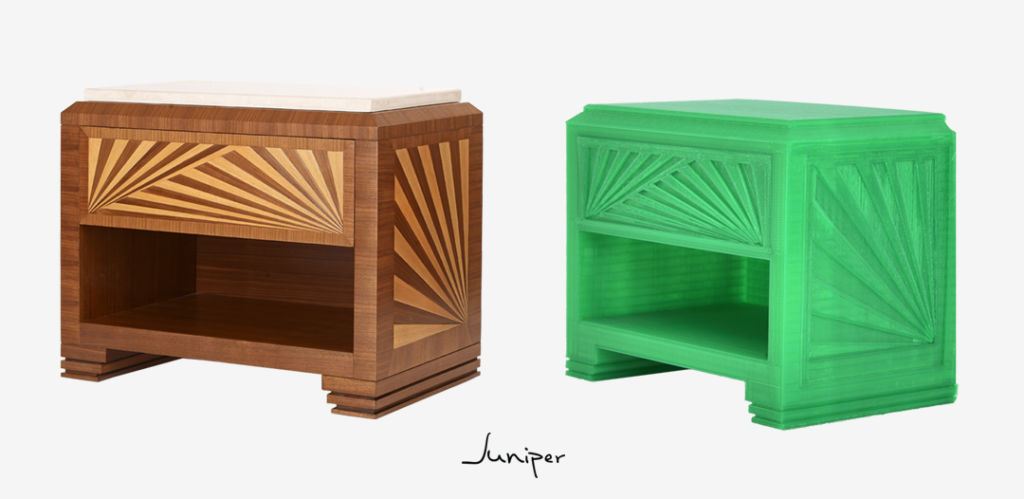Just like the Internet or the Irish band U-2, 3D printing has been around longer than you realize. In fact, all three have their roots in the 1980’s enjoying an upward trajectory ever since, especially 3D printing which has truly come of age in the last decade. While clearly rooted in science, 3D printing has also reached commercial success in the design and business worlds; forever changing life as we know it.
In order to fully appreciate 3D printing, let’s take a brief look at the history of this technology and how it has evolved and transformed businesses around it.
The 1980’s
In 1981 the first printed model is created in Japan using photopolymers printed in cross-sectional layers. Using different technology, in 1984 the invention of the Stereolithography apparatus (SLA) provides a method of printing objects layer by layer using lasers to selectively link together chains of molecules, forming polymers molded into the shape of the 3D-model design. Chuck Hull founds 3D Systems Corporation, which introduces the world’s first commercial 3D printing system, the SLA-1.
The 1990’s
Fused deposition modeling (FDM) is born. This technique involves melting a polymer filament onto a substrate in layers to create a 3D object. The use of 3D printed organs moves from a theoretical science to reality in 1999 when a lab-grown urinary bladder is successfully transplanted into a patient. Blood vessels are bio printed around the same time, making huge technological leaps in the field of medicine.
The 2000’s
RepRap project, founded as an open-source project, aims to build a 3D printer that can print most of its own components democratizing 3D printing by expanding the technology. It is later joined by Shapeways, a 3D printing service that allows people to submit product files to be printed and shipped back to the creators. At the end of the decade, Makerbot makes open-source D.I.Y. kits for people who want to build their own 3D printers or 3D printed products, thus bringing 3D printing technology to the masses. Anyone can now find access to 3D Printers worldwide.
The 2010’s
In a merger of Art and Science, a 3D Printer is featured in an episode of the popular TV series The Big Bang Theory. Engineers at U.K.’s University of Southampton design and 3D print the world’s first unmanned 3D-printed aircraft. 3D printing is not just for small objects anymore! As of 2019, printed items include prosthetics, jewelry, Halloween costumes, furniture and affordable housing for the developing world. Imagine what the next decade will bring.

3D Printing in the Design field
Today architects and interior designers face many challenges with quick turnaround times, customization and growing competition. The use of 3D printing can be a competitive advantage, replacing the labor intensive traditional method of model making with the quicker, more seamless integration of their CAD applications with the 3D printer. This process directly results in highly accurate and detailed scale models that showcase the client’s design. Responding to the clients need for revisions is easier than ever; no need to go back to the drawing board, simply edit your model in your computer software and push print.
Design->Upload to a 3D printer->Print- >Presentation
With demands for personalization and customization increasing, 3D Printing provides architects and interior designers more creative freedom. Many complex designs previously impossible to manufacture are now possible though 3D printing. Ideal for small scale production and customization, 3D printing also significantly reduces the time and money needed to create personalized designs, prototypes, and products.
3D printing has the potential to revolutionize interior design by removing the barriers to entry; now most anyone can design a product using 3D software and print a prototype or one off design. Printed products have come a long way from simple plastic prototypes and can now contain a mix of different materials such as resins, metals, nylon and even wood composite.
Unlike the mullet hairstyle, 3 D printing has only become more popular since the 1980s, steadily infiltrating many areas of our lives. 3D printing is reaching its biggest audience yet with more innovative methods of design being created daily. Whether you prefer Art or Science, we can all agree on the technological beauty of 3D printers.